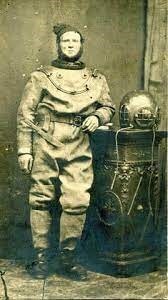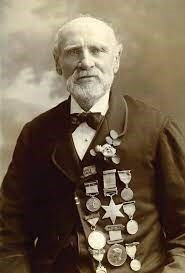- Home
- About Us
- Who was Harry Watts?
Who was Harry Watts?
 Harry Watts was born on 15 June 1826 as the youngest of five children to parents William and Elizabeth Watts in the East End of Sunderland.
Harry Watts was born on 15 June 1826 as the youngest of five children to parents William and Elizabeth Watts in the East End of Sunderland.
Harry’s father, a mariner, was bed-bound for much of Harry’s childhood, while his mother died when he was just seven. At nine, Harry became the main breadwinner for the family. His first job was at the Garrison Pottery, opposite the old Quaker Meeting House, where he received a wage of one shilling and sixpence a week. He later moved to a weaving factory in Fitter’s Row, but his constant hunger eventually drove him to seek work at sea, as food was plentiful for sailors.
Harry signed up as an apprentice sailor at 14.
Harry’s life at sea
Harry’s first voyage was to Quebec and within only a few weeks he had made his first rescue, after a fellow apprentice fell overboard. On his second voyage to the Miramichi in Canada, he saved the life of his captain after his canoe capsized - his second rescue.
By the age of just 19, Harry Watts had saved five people from drowning.
Harry married his first wife, Rebecca Smith, in 1846 while on shore-leave. The following year, he rescued six foreign seamen from a sinking ship in Rotterdam. He then returned to Sunderland to work as a rigger in the shipyards, rescuing a further five people from the River Wear between 1852 and 1853.
Harry’s later years
 Harry Watts signed up as a diver with the River Wear Commissioners in 1861, a role he held until 1896. As a rescue sideline, he also joined Sunderland Lifeboat and Life Brigade services, where he assisted in saving a further 120 people.
Harry Watts signed up as a diver with the River Wear Commissioners in 1861, a role he held until 1896. As a rescue sideline, he also joined Sunderland Lifeboat and Life Brigade services, where he assisted in saving a further 120 people.
His job as a diver was a dangerous one. Not only did he save several more people from drowning, he also helped blast away the rocks from below Lambton Drops, to make the entrance to the river easier to navigate, provided vital aid when the mines of County Durham flooded and was part of the rescue party dealing with the Tay Bridge Disaster in 1879.
The bravery Harry Watts had shown throughout his life was finally recognised in the late 1860s, when several medals were bestowed on him. However, these were stolen in 1878, after Watts lent the collection to the James Williams Street Christian Lay Church for an exhibition at its annual bazaar. It was later discovered the thief had given them to his daughter to play with, who threw them into the fire after growing bored.
The people of Sunderland rallied round to pay for replacements, and Watts was able to wear them with pride once again, before presenting them to Sunderland Museum. Today Watts’ memory – and bravery – lives on at the museum, where the collection is still on show.
Harry Watts died on April 23, 1913, at the age of 86.His diving activities were carried on by his son, and then his grandson, who were also named Harry Watts.
